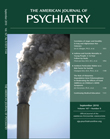This impressive text is the work of 52 contributing authors, many of whom are internationally respected for their research in ECT and other neuromodulation therapies. More than 85% of the book is devoted to ECT, and its first 34 chapters comprise the largest and most comprehensive review of the subject since the publication of Electroconvulsive Therapy, authored by Richard Abrams, M.D., in 2002. In the intervening years, ECT has generated a large scientific literature, and this new book is the most comprehensive review of it currently available.
The chapters on ECT are divided into five parts. Part one is devoted to the scientific and experimental basis of ECT and contains eight well-written, extensively referenced chapters on neurochemical and hormonal effects, mechanism of action, and brain imaging as well as evidence for efficacy in mood disorders, catatonia, and psychoses. It is a luxury to have this large and diverse body of research reviewed comprehensively in one volume. Part two has very interesting chapters on nonclinical issues, including a concise but excellent history of ECT written by Edward Shorter, the foremost historian of this treatment. Other chapters review ECT's often prejudicial depiction in books, movies, legislation, and within the healthcare system. The tone of these chapters is objective and fair, but they do not mince words about the irrational stigma that has been the burden of ECT for decades and the harm that this does to patients who need the treatment. Part three consists of chapters on international perspectives of this treatment, including discussions of ECT in the United States, the United Kingdom, Scandinavia, Western Europe, Asia, Russia, and Latin America. I was surprised to find this in an ECT text, but once I got into them, I found these chapters fascinating. They are a great addition, and even psychiatrists who never practice ECT will find them interesting. Parts four and five cover administrative issues and the clinical practice of ECT, and as such they should be required reading for anyone embarking on the practice this treatment. The clinical chapters are clearly written and thoroughly referenced and address all relevant issues, including patient selection, consent, treatment technique, anesthesia and medical risk, cognitive side effects, and long-term follow-up. The chapter on ECT in children and adolescents was especially timely, since children with mood disorders often derive great benefit from this treatment and tolerate it well but rarely have access to it because of prejudice and daunting legislative and administrative obstacles.
The four chapters on neuromodulation are concise and well-crafted reviews of transcranial magnetic stimulation, vagus nerve stimulation, deep brain stimulation, and transcranial direct current stimulation. Because of space limitations, they could not have the depth the preceding chapters enjoyed. They are not treatment manuals, and in this respect they differ in utility from the previous chapters on ECT. Nevertheless, they provide a useful overview of these therapies, which will be of interest to many psychiatrists, regardless of their professional focus. For anyone in search of an introduction to the field of neurotherapeutics, these 55 pages would be a useful starting point.
Although the majority of chapters reflect consensus views about ECT, Dr. Swartz sometimes expresses positions that are outside the mainstream of professional thinking. For instance, he writes “no justification has ever been presented for using 0.3 ms pulse width in place of the desirable 0.5 ms pulse width, so that 0.3 ms pulse width remains entirely speculative and experimental” (p. 15), in spite of a growing body of evidence that a 0.3 msec pulse width (also known as ultra brief pulse) for many patients offers effective treatment, with marked reduction in cognitive side effects (
1–
3). In his chapter on patient selection, he uses a taxonomy of mood, anxiety, and psychotic disorders that is different from DSM criteria. This may make the use of his selection criteria difficult for psychiatrists and primary care physicians who are accustomed to working within the context of DSM.
Nevertheless, this book is an important achievement. It reflects the growing worldwide interest in neurotherapeutics as one of the most vibrant, promising, and scientifically based branches of modern psychiatry, and in that sense it is somewhat of a milestone. There is nothing like it anywhere on the subject. It should be on the bookshelf of anyone practicing or intending to practice ECT. In addition, it will be of great value to researchers, residency training programs, healthcare administrators, legislators, and policymakers. It will contribute worldwide to the understanding and advancement of ECT and other neurotherapeutic modalities.

